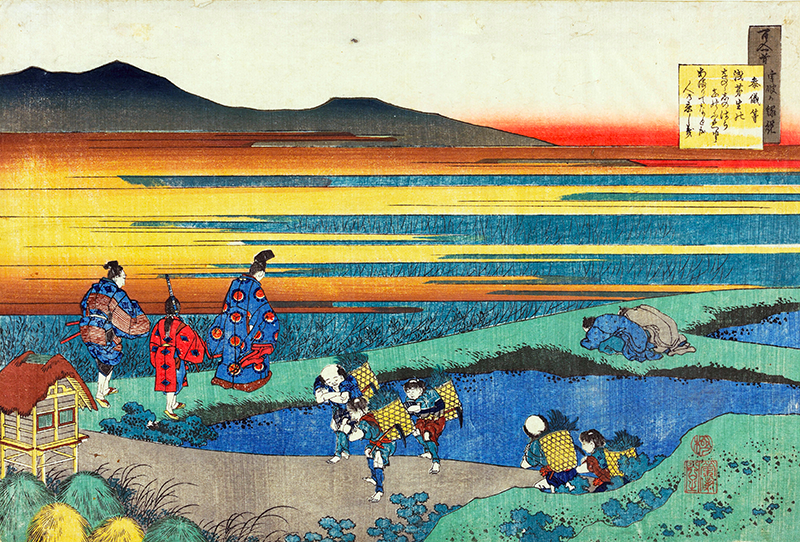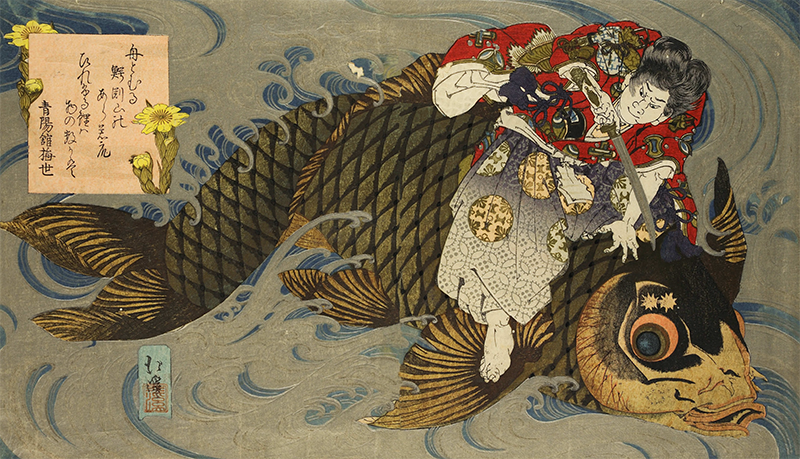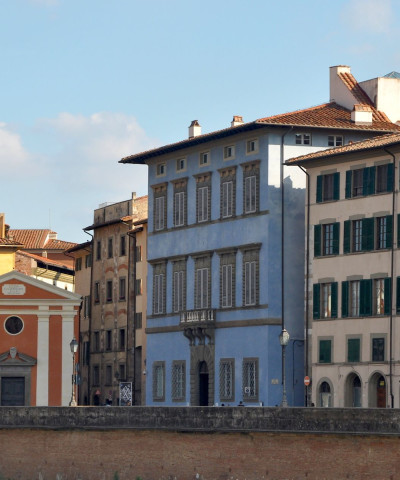The Hokusai exhibition at Palazzo Blu
The large exhibition dedicated to the Japanese master until 23 February 2025 in Pisa
Palazzo Blu in Pisa is hosting a major exhibition dedicated to the Japanese master HOKUSAI, until 23 February 2025, produced and organised by Fondazione Palazzo Blu and MondoMostre, with the contribution of Fondazione Pisa. (To find out everything you don't know about Palazzo Blu, its history and past exhibitions, click here!).
Through more than 200 works from the Museo d'Arte Orientale Edoardo Chiossone in Genoa and the Museo d'Arte Orientale in Venice, as well as from private Italian and Japanese collections, the exhibition highlights the eclecticism of the greatest master of the ukiyoe artistic strand, literally translated as images of the Floating World, which marked the apex of the development of Edo-era art (1603 - 1868) in Japan, and the richness of his legacy evident in the works of the many pupils who continued his style.
 Sangi Hitoshi, dalla serie Cento poesie dai Racconti della balia Katsushika Hokusai ©Museo d'Arte Orientale Edoardo Chiossone Genova
Sangi Hitoshi, dalla serie Cento poesie dai Racconti della balia Katsushika Hokusai ©Museo d'Arte Orientale Edoardo Chiossone GenovaStarting from the production realised for the large market in single printed sheets, with a wooden matrix and in polychrome, in different series and editions, the exhibition highlights the variety of formats and contents with a section dedicated to illustrated volumes, manga and manuals designed to teach drawing or to be read and observed for pleasure, up to representing the printed production reserved for a more cultured and refined clientele (surimono) made up of greeting cards, invitations, advertising events, restaurants, literary meetings, products and the work hand-painted by the master and his students on vertical rolls that exemplifies the utmost freedom of artistic expression. Thus, alongside the master's works, the silograph and pictorial works of his closest pupils are also presented, including Hokkei, Gakutei, Hokuba, Ryūryūkyō, as well as his daughter Oi, who accompanied Hokusai until the end of his career, working at his side and collecting his artistic legacy according to her own style.
 Oniwakamaru sottomette una carpa gigante Surimono, Totoya Hokkei ©Museo d'Arte Orientale Edoardo Chiossone Genova
Oniwakamaru sottomette una carpa gigante Surimono, Totoya Hokkei ©Museo d'Arte Orientale Edoardo Chiossone GenovaThe exhibition is divided into eight sections: Famous Views of Japan, Views of Mount Fuji, Manga and Manuals, Representation of Poets and Poems, Surimono: Cards and Invitations, The Freedom to Paint, Hokusai and Japanism, Hokusai Pop. The exhibition begins with Hokusai's most famous and prolific production, the prints of views of famous places (meisho) destined for the vast market. The next section presents the production of illustrated volumes, in particular the 15-volume Manga series intended as drawing manuals for professional painters and amateurs, along with other illustrated books and manuals. From here, the exhibition continues with a selection of works designed for a more cultured audience, thus less marketable than landscapes and female beauty, as it is linked to literary and poetic themes and characters. The heart of the exhibition is represented by a large section devoted to an exclusive artistic production little known to the public: the surimono, cards and invitations of the highest technical refinement, conceived for a cultured and elite clientele. Finally, the exhibition closes with a selection of hand-painted scrolls that represent the pinnacle of Hokusai's skill and eccentricity in drawing, as well as his deepest spirit.






![La [grande] onda presso la costa di Kanagawa (Kanagawa oki namiura), dalla serie “Trentasei vedute del monte Fuji (Fugaku sanjūrokkei)” Katsushika Hokusai ©Museo d'Arte Orientale Edoardo Chiossone Genova](https://www.firenzemadeintuscany.com/assets/w=1500&h=740&fit=fill&f=center___images.ctfassets.net_7dc7gq8ix1ml_1vW1qfC8EWas1RNJhQoNW7_6e9a79ad6848479ceaa32145f49b77c7_llll.png)



